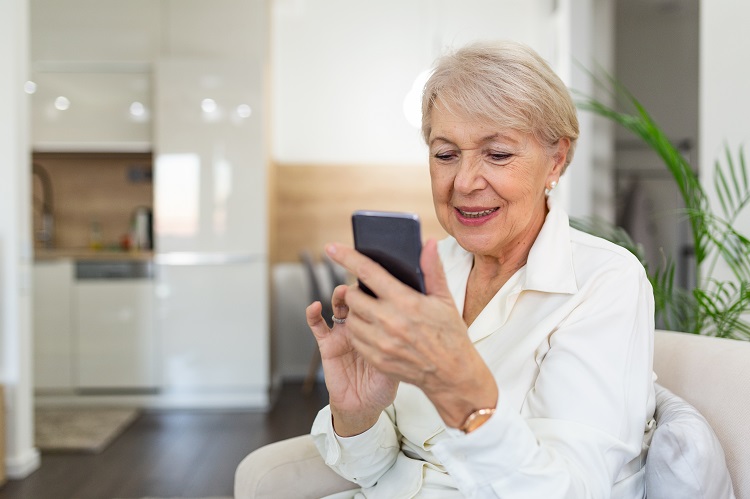 Source: iStock.com/stefanamer
Source: iStock.com/stefanamer
More human contact in everyday life in times of coronavirus with smartphones for senior citizens
31. December 2020 Published by Raphael DoerrOnly the display between us
Senior citizens seem to have discovered a new form of communication for themselves during the coronavirus pandemic: video telephony. When personal contact with the family is too risky, you can also meet your daughter or grandchildren virtually. The easiest way to do that is by smartphone – no matter whether it’s via WhatsApp, Zoom or Facetime.
“With the outbreak of the pandemic, it became even clearer just how important it is for the elderly to have access to modern technology. Whether it’s to maintain social contact or install the Corona-Warn-App, everyone should have a functioning smartphone.
There’s little difference in this regard between the needs of the younger and older target group, as was already confirmed by the study ‘Smart im Alltag 2019’ (Smart in everyday life 2019). The result: Senior citizens are also interested in technology and increasingly enjoying new technologies. Social networks like Facebook, WhatsApp and video telephony, for instance, currently play a key role in smartphone usage.
Easy to use
There is one difference, however: The focus of the younger generation is often on faster processors, the design and lots of additional functions, while senior citizens are primarily interested in a large, easy-to-read display and ease of use.
The ‘Smart im Alltag’ study clearly shows that many older smartphone users have experienced the option of digital communication during the coronavirus crisis and the associated restrictions in physical social contact as especially valuable Just under half of those surveyed said they believe they have more contact with the people around them thanks to their smartphone. In addition, 42% said that they would more or less have little to no contact with the outside world in times of lockdowns and social distancing without a smartphone. Two thirds of the participants also said that being together digitally is not only indispensable now but will also be in the future.
Smartphone for senior citizens
Nevertheless, the question now is how communication will develop, and which smartphone offers the best possible all-round package for the needs of senior citizens. The communications solutions from Gigaset have always catered to the needs of all age groups – from the family-friendly cordless fixed-line phones with a baby monitor to phones in the life series with optical call signal and hearing aid compatibility. In the smartphone sector, Gigaset offers a model tailored specifically to the life situation of senior citizens in the shape of the GS195LS. “It’s irrelevant how good the hardware for a smartphone is if the software fails to make these functions accessible for the user. That’s why it was particularly important to us to develop a special interface that is adapted to suit the special needs of the elderly,” explains Christoph Dodt, Product Manager at Gigaset.
The Gigaset GS195LS impresses with a self-explanatory user interface, large icons and an integrated emergency call function. And with applications like WhatsApp, Facebook and video telephony, the user is in contact with their loved ones at all times.
 Comments
Comments
 en
en 







